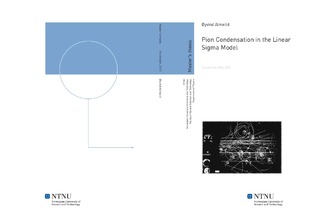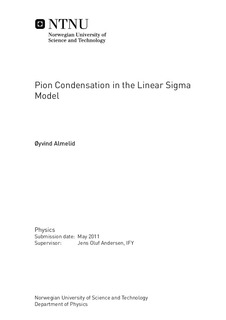| dc.description.abstract | In this thesis we study the phase diagram of quantum chromodynamics in an effective low-energy theory at zero baryon chemical potential but finite temperature and isospin density. We investigate pion condensation at finite temperature and isospin chemical potential $mu_I$ in two different approximation schemes of the linear sigma model; the Large-$N$ and Hartree approximations at leading order. While being a simple model, the linear sigma model allows for phase transitions of both the first and second order, as well as crossover transitions at the physical point. The large-$N$ approximation yields results typical for mean-field approaches, including a second order phase transition with critical exponent $nu = frac{1}{2}$. At the physical point we find that pion condensation occurs below a threshold temperature $T_c(mu_I)$ only for $mu_I geq m_pi$. Due to the symmetry of the $O(N)$ expansion, the large-$N$ approximation also obeys Goldstone's theorem, yielding a massless Goldstone mode in the pion condensed phase.By contrast, we find a large violation of Goldstone's theorem in the Hartree approximation, with the Goldstone mode achieving a mass of $200 ~hbox{MeV} approx 1.4~ m_pi$. It is possible that the Hartree approximation's violation of symmetry makes the Goldstone mode tachyonic at low temperatures. However, it appears that the Hartree approximation yields a phase structure much more similar to what has been found in lattice studies, with a first order phase transition at high isospin densities and crossover transitions at lower densities. We have only been able to study the Hartree approximation under the condition that either the chiral condensate or the pion condensate is zero, however, and accurate probing of the phase diagram at the physical point is therefore not possible. | nb_NO |

